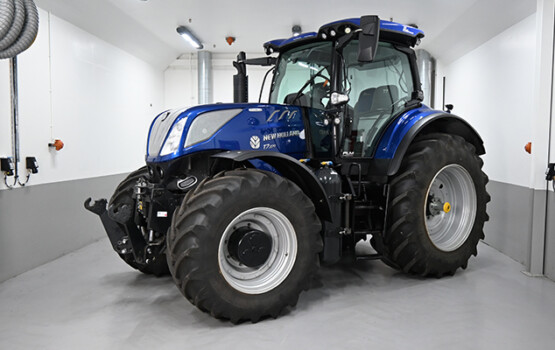Portal for more climate-friendly mobility

Biogas for McDonald’s & Co.
In North America, too, biogas is the option to avoid diesel. Amazon, Walmart and now also McDonald’s Canada are seeing the advantages of decarbonisation in the logistics and shipping sector. In recent years, engine specialist Cummins has produced over 85,000 CNG engines for medium and heavy-duty vehicles which are now used in trucks, intercity buses and school buses, as well as garbage collection vehicles.
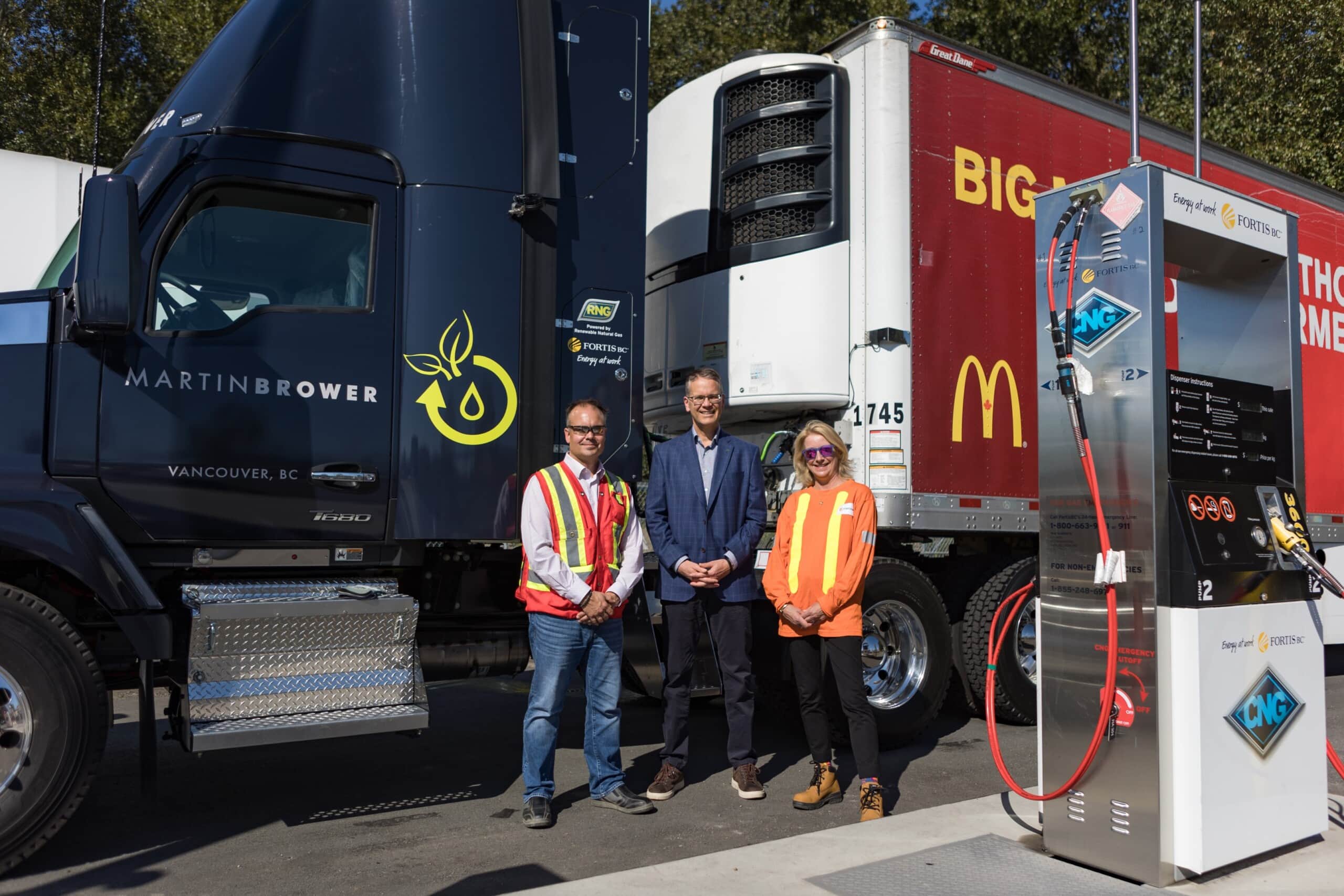 Mike Leclair, Vice President of Major Projects and LNG (Fortis BC), Rod Halladay, Regional Vice President for Western Canada (McDonald’s Canada), and Sarah Smith, Director of Low Carbon Transportation and LNG Business Growth (Fortis BC) in front of one of the total of seven trucks that are CO2 neutral on the road thanks to biogas. Source: Fortis BC.
Mike Leclair, Vice President of Major Projects and LNG (Fortis BC), Rod Halladay, Regional Vice President for Western Canada (McDonald’s Canada), and Sarah Smith, Director of Low Carbon Transportation and LNG Business Growth (Fortis BC) in front of one of the total of seven trucks that are CO2 neutral on the road thanks to biogas. Source: Fortis BC.
In North America, too, many commercial fleet operators are considering switching their vehicles from diesel to hydrogen or CNG. The most recent example: McDonald’s Canada, for which logistics service provider Martin Brower now uses trucks that are powered by CNG and run on biogas. “At McDonald’s Canada, we know that small changes in our supply chain can have a big impact. That’s why we’re working with our long-standing distributor Martin Brower to make use of our size to support a good cause,” explains Rob Dick, Supply Chain Officer at McDonald’s Canada. Energy supplier Fortis BC will deliver up to 5,000 gigajoules of biogas over the next year, enabling all seven CNG trucks to be climate neutral.
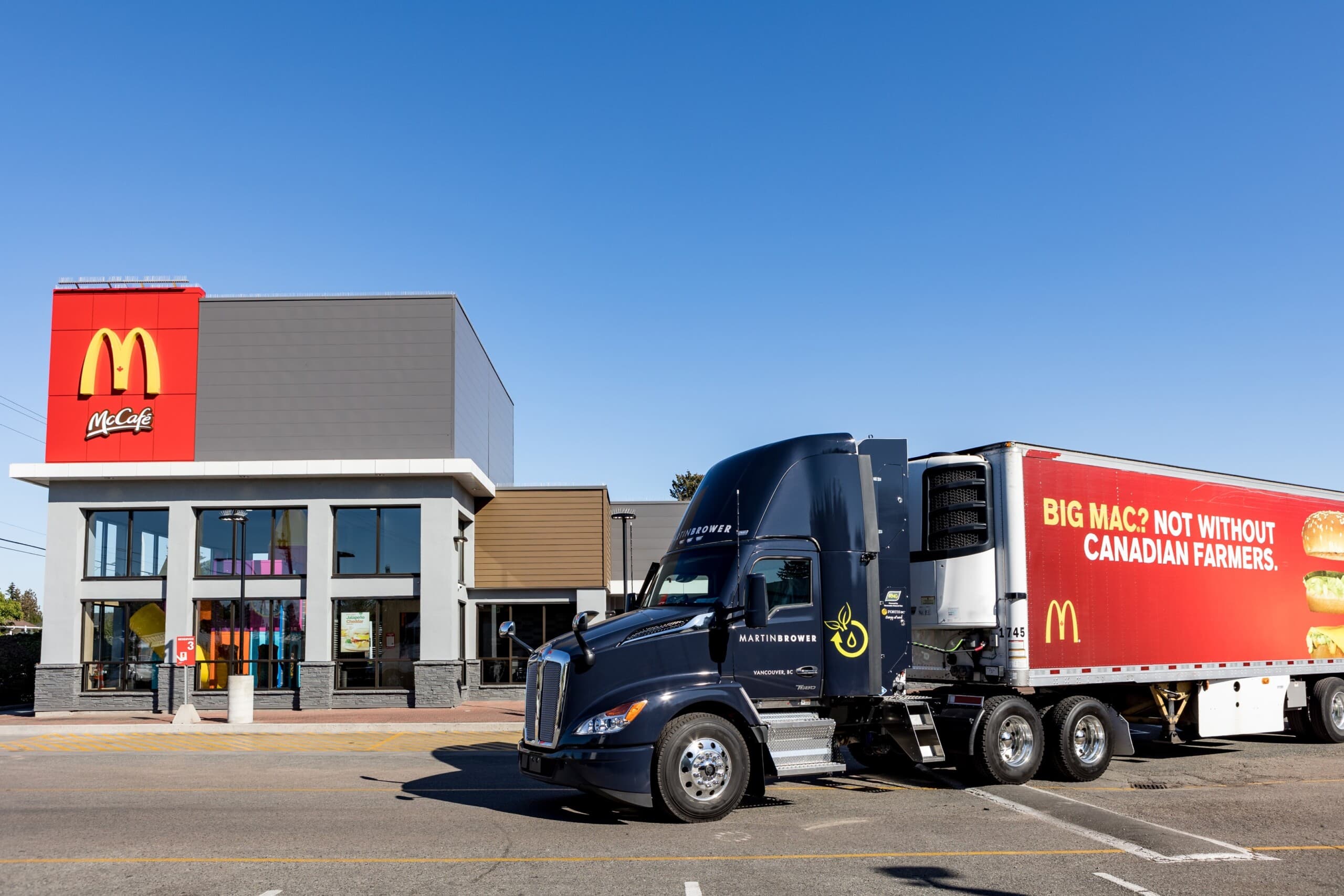 The CNG trucks supply the Canadian McDonald’s branches CO2-neutrally thanks to biogas. Source: Fortis BC.
The CNG trucks supply the Canadian McDonald’s branches CO2-neutrally thanks to biogas. Source: Fortis BC.
CNG – and now biogas in particular – has become one of the most popular alternative fuels for commercial vehicles overseas. Natural gas is abundant, relatively cheap and easily available due to fracking. But the share of renewable natural gas, or RNG for short, that is obtained from organic waste, as in our case biogas and biomethane, is also steadily increasing. Industrial production of RNG is even seeing a boom due to growing demand in America. In 2020, there were still 157 biogas plants producing RNG. By the end of 2021, this number had already risen to 230 across America.
 Engine specialist Cummins is trying to drive decarbonisation in the transport sector thanks in part to the use of biogas. Source: Cummins
Engine specialist Cummins is trying to drive decarbonisation in the transport sector thanks in part to the use of biogas. Source: Cummins
Between 2016 and 2021, the use of CNG increased by over 230%. In 2021, American companies registered around 6,500 new CNG vehicles. This is an increase of 3% compared to the previous year, meaning that around 121,000 CNG-powered vehicles are currently on the road in the United States. Engine specialist Cummins alone has produced over 85,000 CNG engines for medium and heavy-duty vehicles which are now used in trucks, intercity buses and school buses, as well as garbage collection vehicles. “Whether it’s used to generate heat and electric power or as the fuel for a fleet, RNG helps reduce net carbon emissions,” said Puneet Singh Jhawar, General Manager Global Natural Gas Business at Cummins. “RNG is classified as an advanced biofuel under the Renewable Fuels Standard in the United States. This means that CNG engines have a key role to play in our renewable future.”

No wonder: replacing 100 older diesel buses with Cummins’ L9N gas-powered buses has the same effect as banning 280 petrol-fuelled cars from the road. Natural gas is available as a compressed CNG at approximately 1,500 public and private service stations in the United States. Many fleets interested in this technology are also investing in private filling station infrastructure, allowing their trucks to refuel “at home” before they embark on their daily routes. The Cummins expert believes that while RNG is not able to meet all of mankind’s energy needs, it has the capacity to play an important role in decarbonising selected commercial mobility applications. “RNG production has increased in recent years and is expected to continue to have one of the fastest growth rates for fuels,” adds Punzet Singh Jhawar.
Large companies such as the department store chain Walmart, online giant Amazon and the US brewery Anheuser-Busch are already reducing their CO2 emissions with a growing fleet of CNG trucks. “Nonetheless, achieving a net-zero future will require a number of different technologies,” says Amy Davis, Vice President and President of New Power at Cummins. “With our comprehensive zero-emission portfolio, we’re able to meet the various customer requirements in the hardest-to-manage sectors and make the energy transition possible.” For this reason, American powertrain specialist Cummins also presented the fourth generation of its fuel cell engine at the IAA Transportation this fall, available as a 135 kW single and 270 kW dual module, along with a new lithium iron phosphate (LFP) battery package and the newly acquired electric powertrain technologies by Meritor. (pd/jas, 03 November 2022)
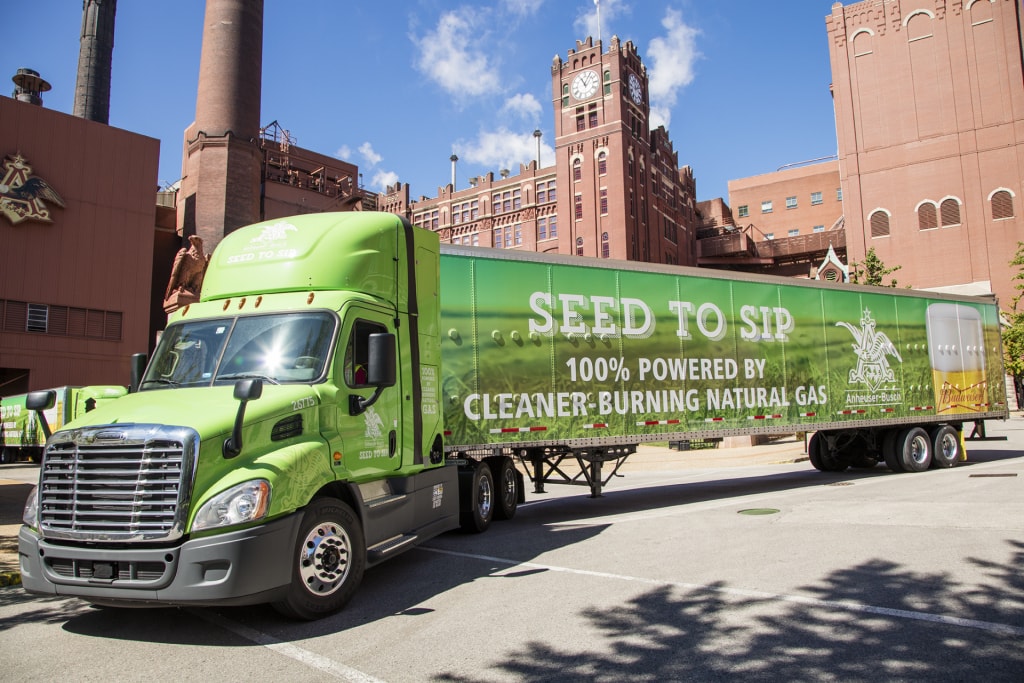 US brewery Anheuser-Busch also relies on CNG trucks and biogas in the tank. Source: Anheuser-Busch
US brewery Anheuser-Busch also relies on CNG trucks and biogas in the tank. Source: Anheuser-Busch
You might also be interested in
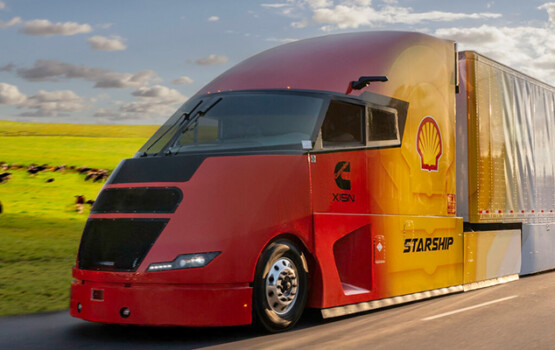
Shell Starship on record hunt
